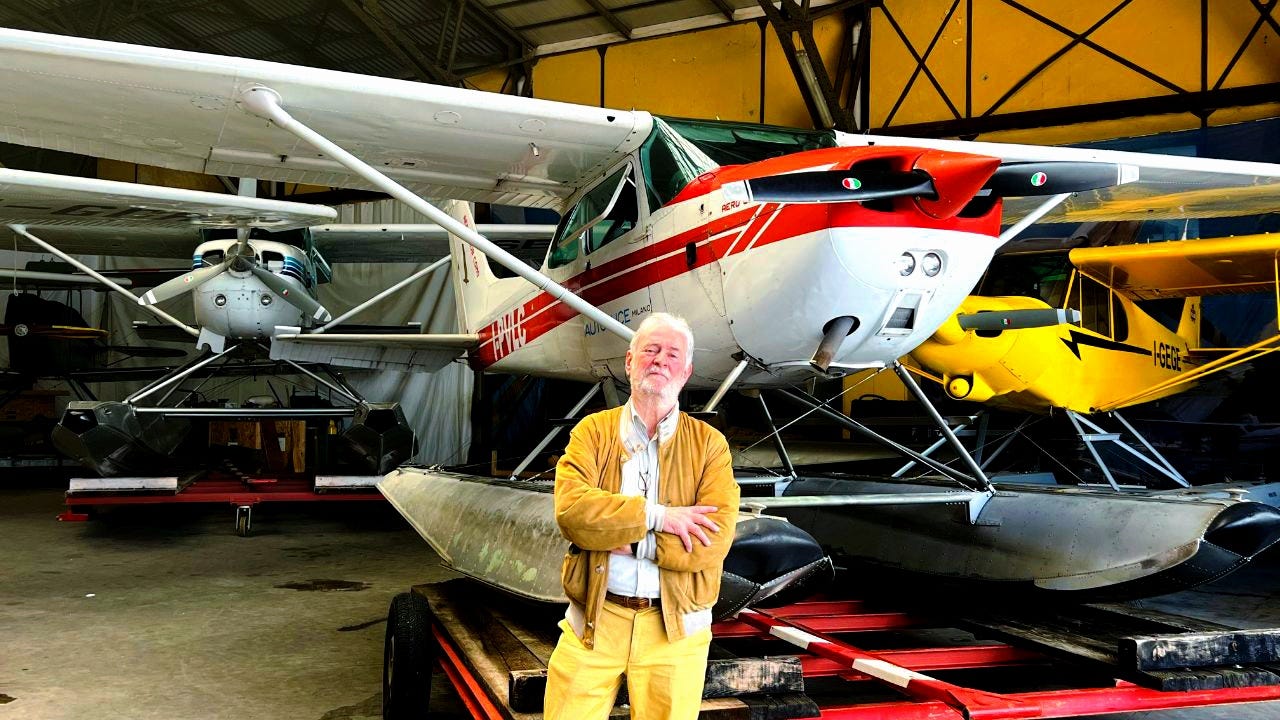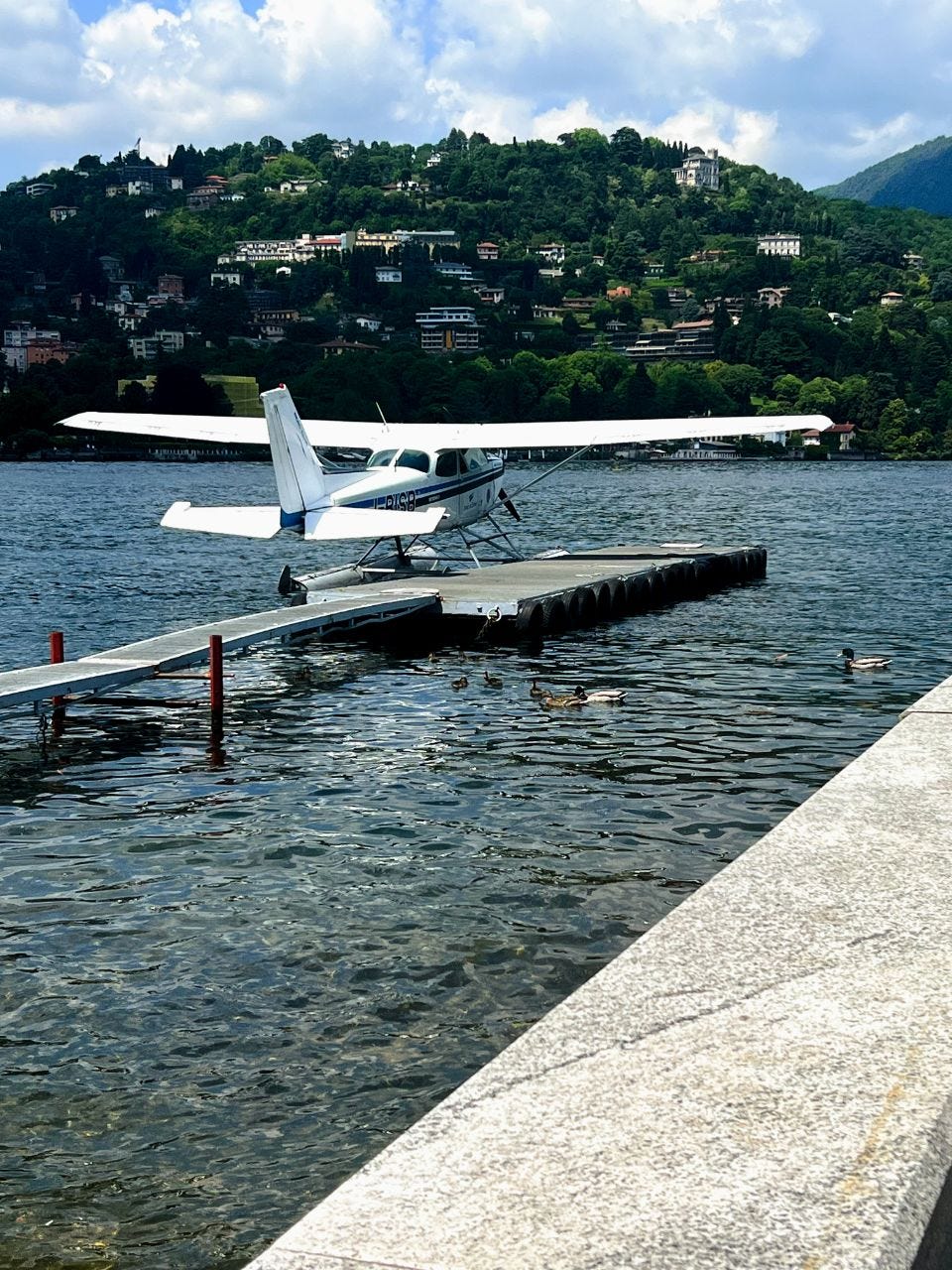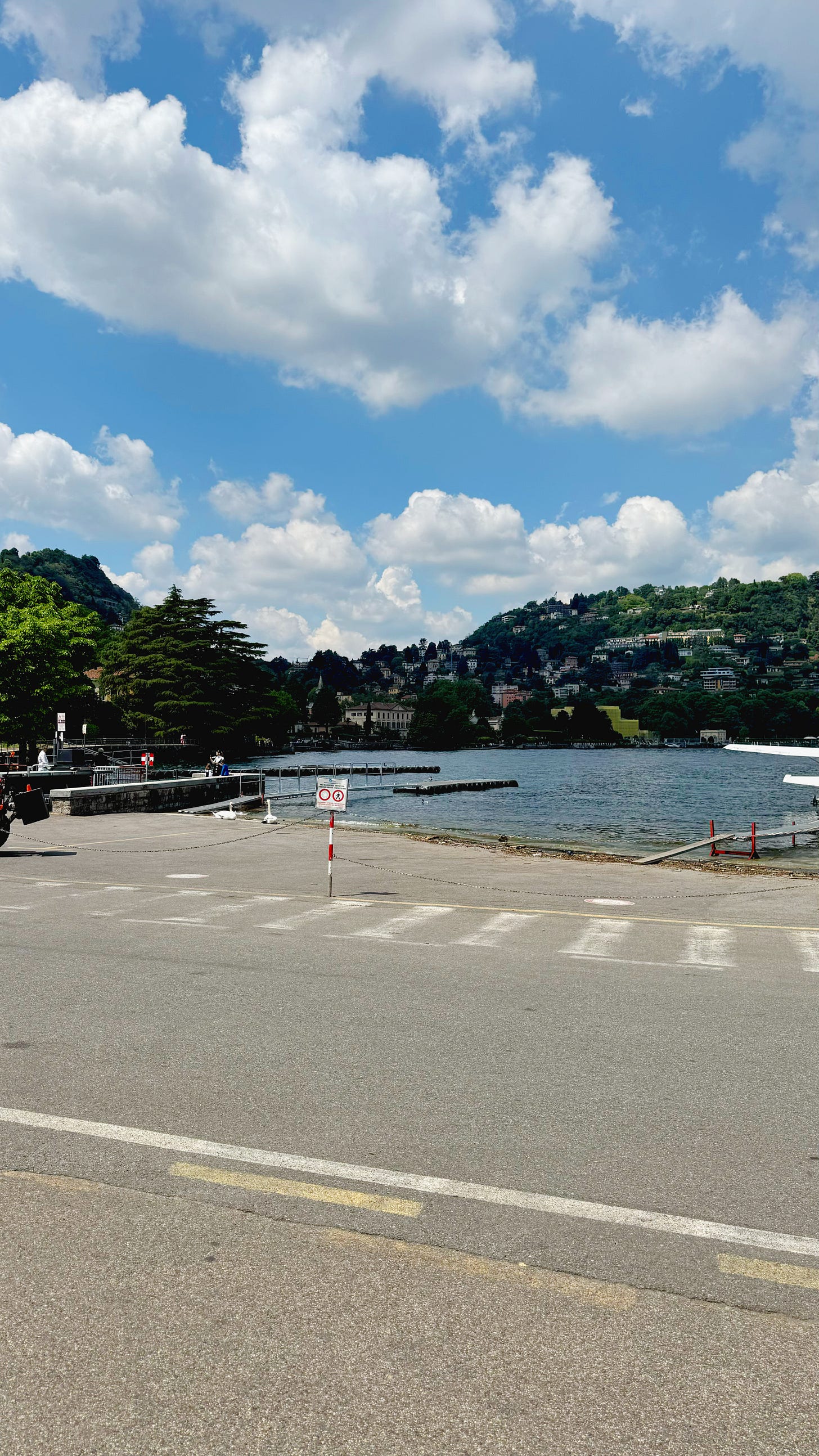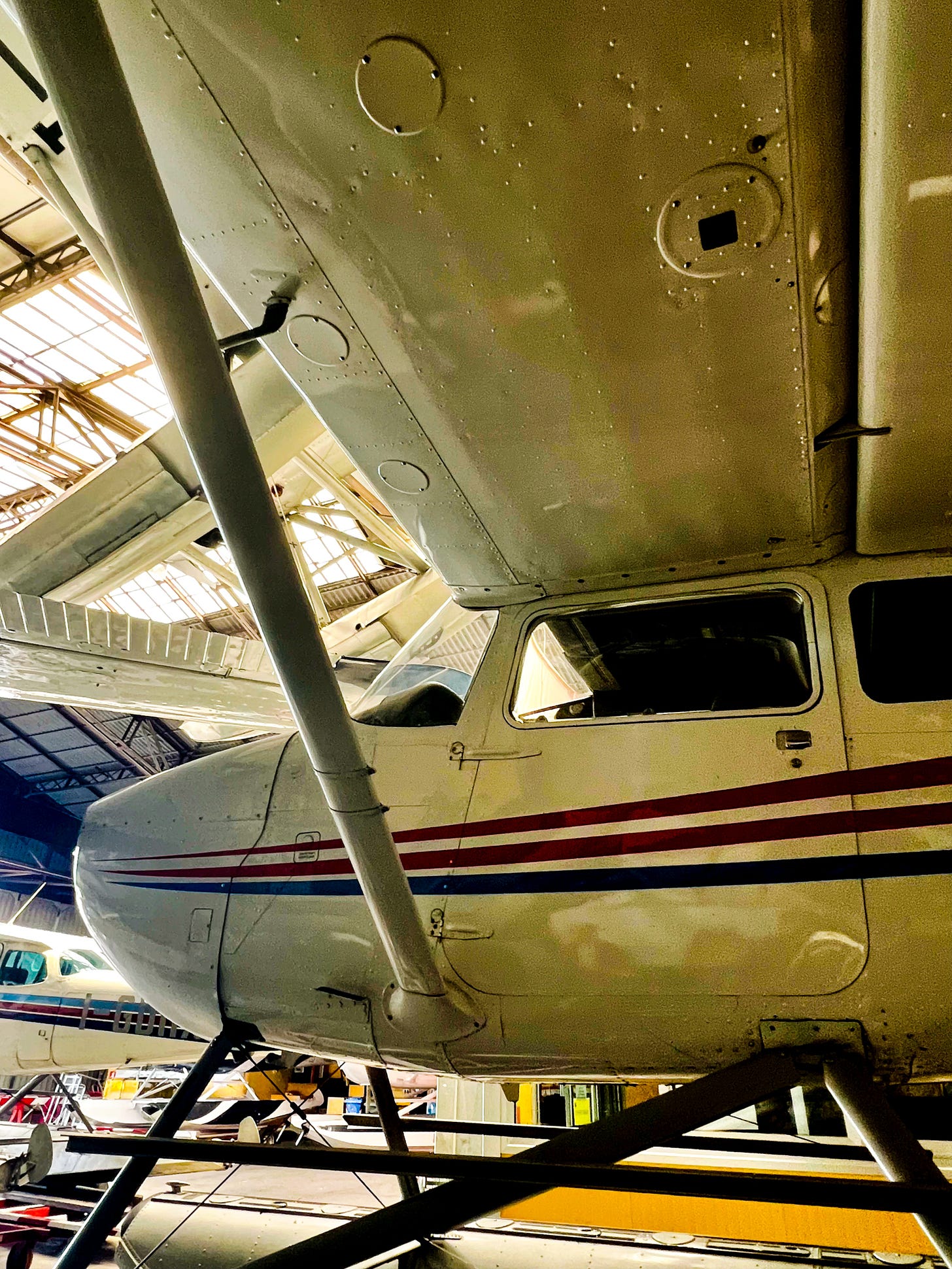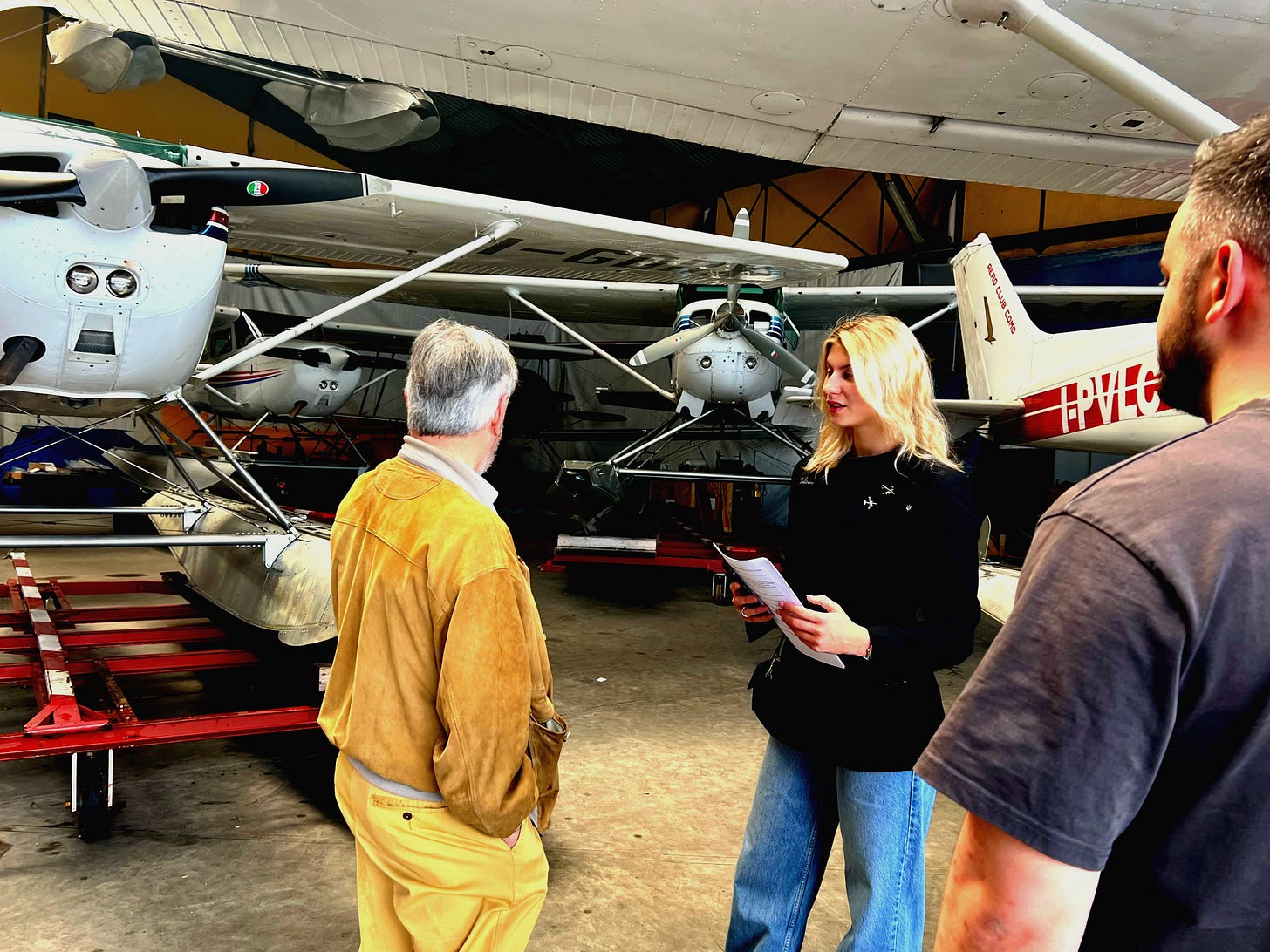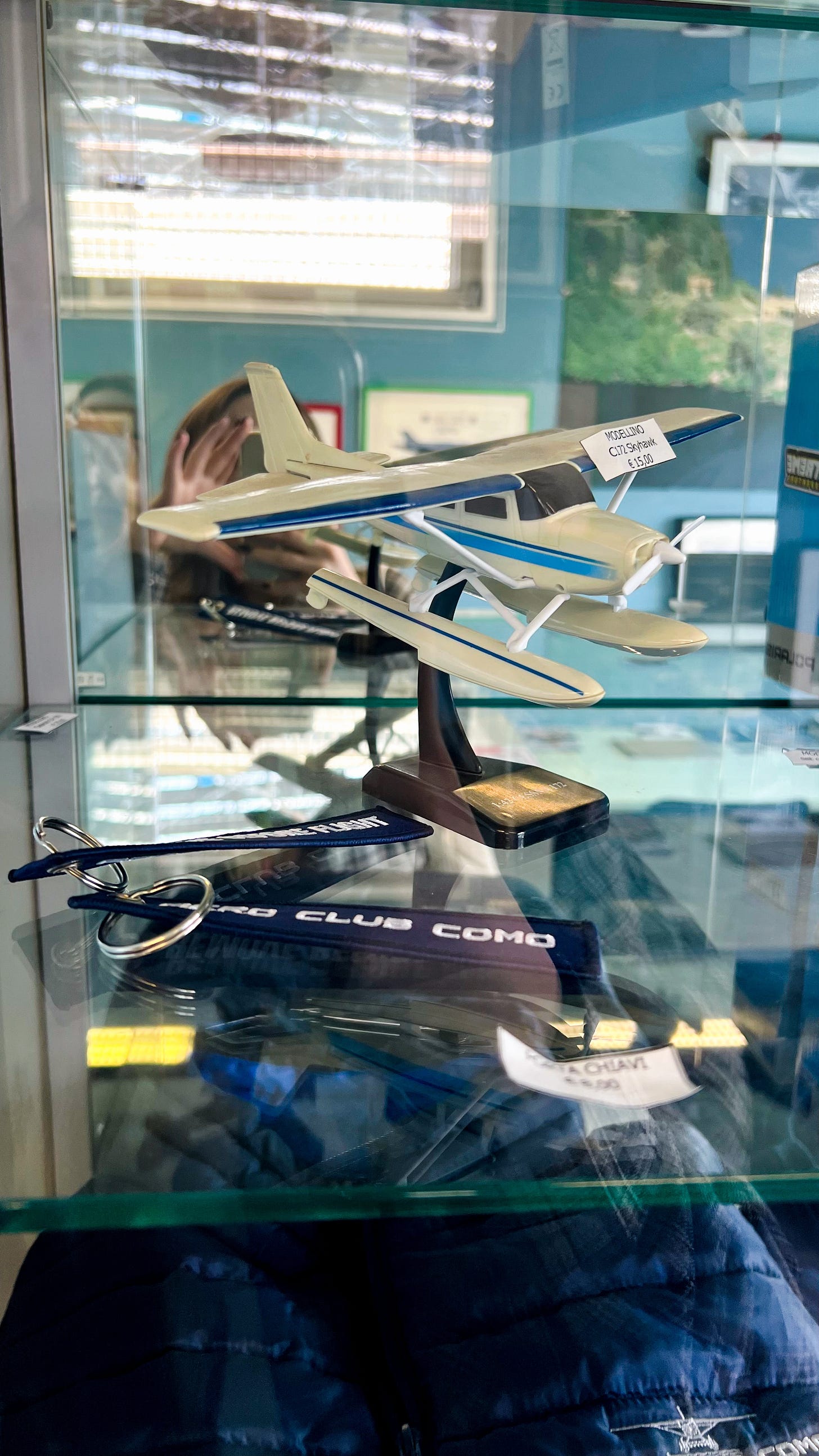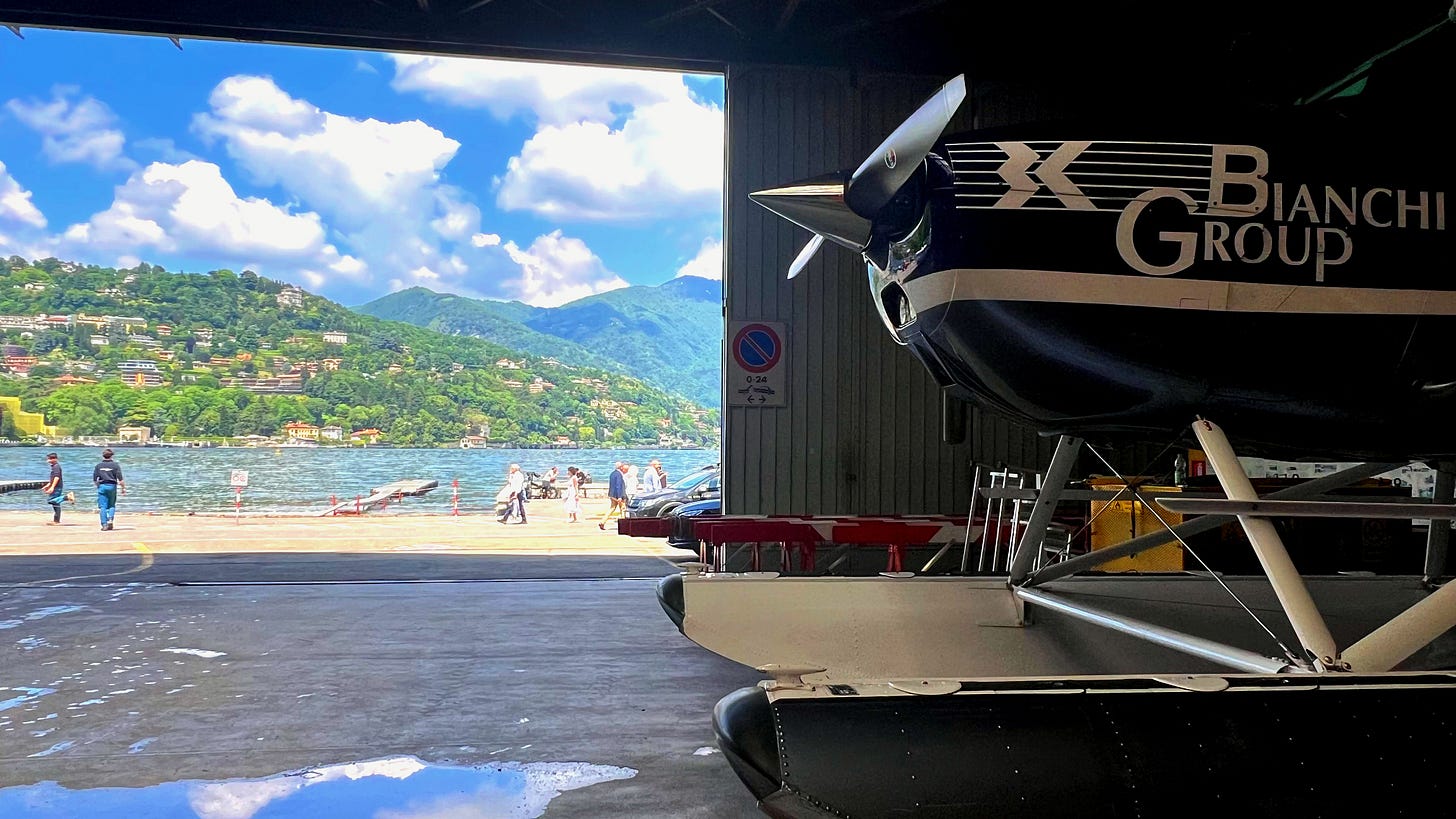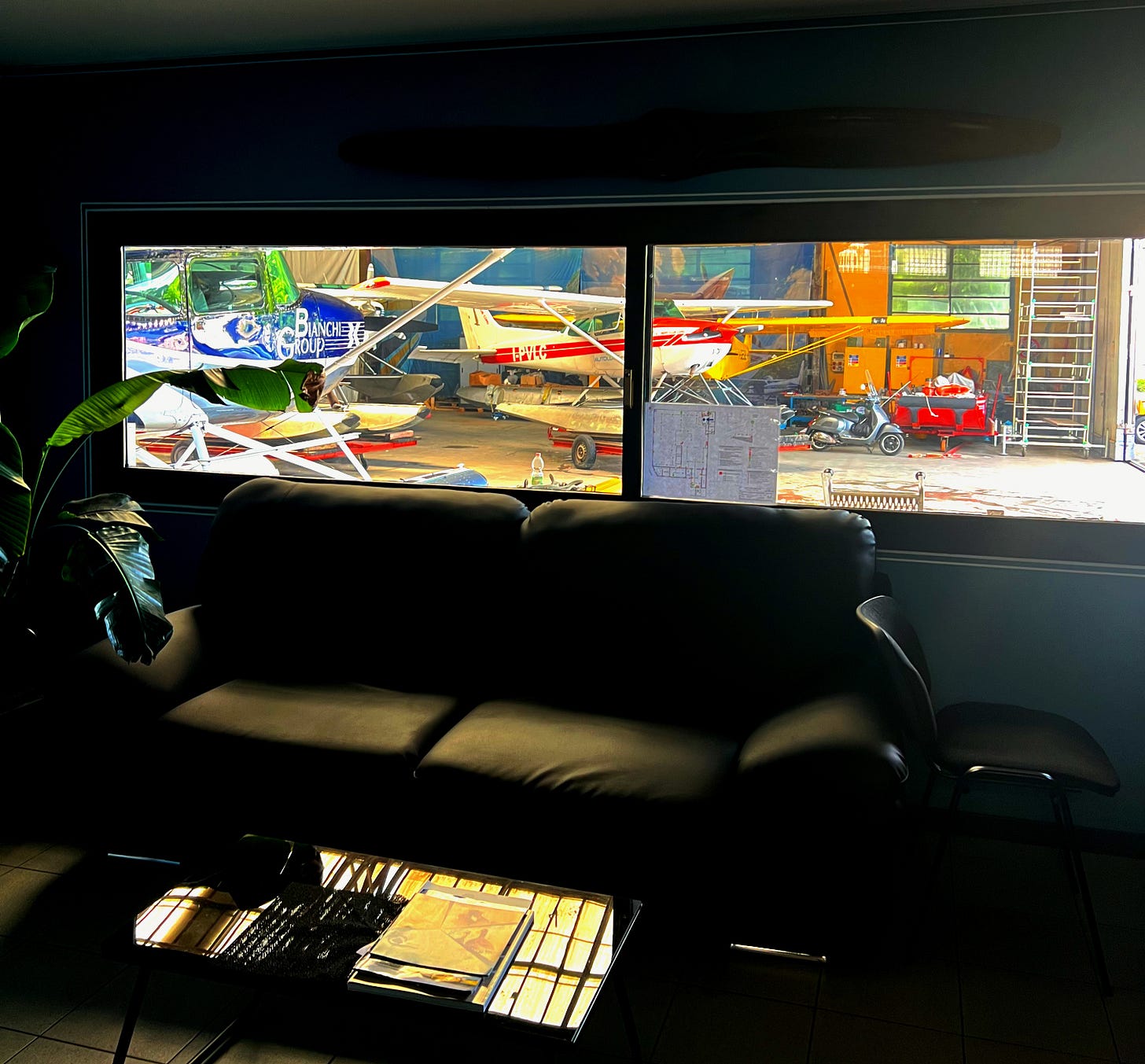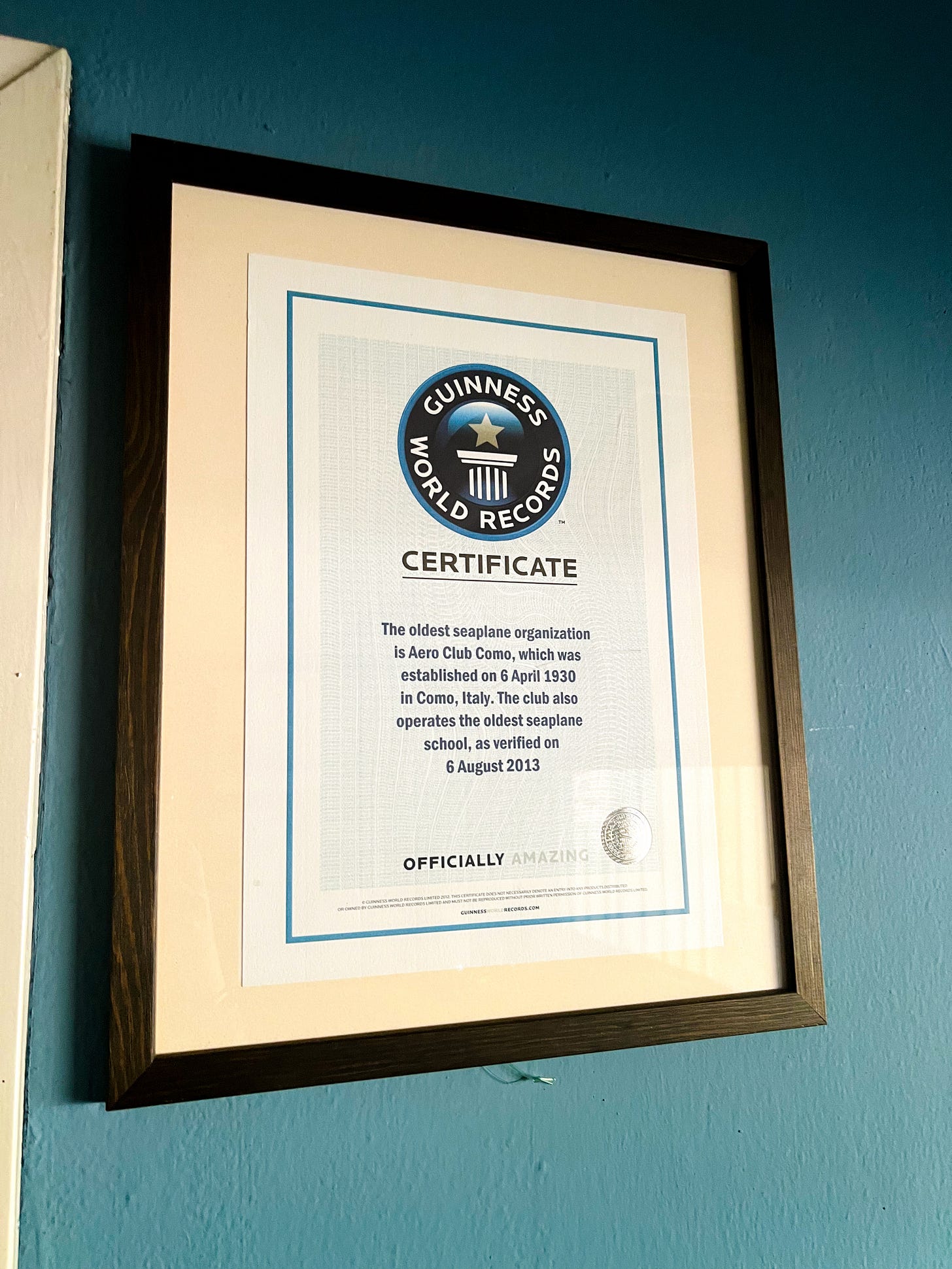Aero Club Como: A Living Legacy of Seaplane Aviation.
Exclusive Interview with Cesare Baj, Honorary President of the Aero Club Como
From 1930 to Today: The Oldest Seaplane Club in the World
At Lake Como, aviation takes a different form. Here, aircraft rise not from runways, but from water, reflecting a tradition that stretches back over a century.
Since 1930, the Aero Club Como has stood as a beacon of continuity in seaplane aviation. It is not only the oldest seaplane club in the world, but also one of the few remaining active bases in Europe. With each takeoff across the calm surface of the lake, it preserves a piece of living history.
At the heart of this story is Cesare Baj — pilot, author, and long-time president — who has devoted his life to ensuring this unique legacy continues to inspire future generations.
A Personal Journey and Commitment to Aviation.
When he was 19 years old, he had his first taste of flight at the club when an instructor offered him a short introductory ride — almost for free. “The instructor who was here was a fighter pilot in World War II. He asked how much money I had in my pocket ; I replied, very little. He took me up for a short flight — just a takeoff and a couple of circuits. Then he told me to go and ask my father for permission. That moment left a lasting impression.” Permisson by Baj’s father was immediately granted and his passion for aviation was fully ignited when he officially approached the club to begin training. ”
Viktoriia H: “When did you become the club president?”
“I became president in the early 2000s. It was a natural step after many years of involvement. I had already written books, participated in international conferences,and regularly made special flights for the film industry. It felt like the right way to keep serving this place.”
At the time he started flying, the club only had pure seaplanes — aircraft with no wheels, capable of landing exclusively on water. Baj flew those for a decade before transitioning to amphibious planes — aircraft capable of landing both on water and on land.
Cesare Baj’s lifelong passion for aviation, combined with his deep experience in editorial work — including serving as CEO of a newspaper — has resulted in a lasting contribution to aviation literature. Drawing on decades of writing, editing, and flight instruction, he has authored numerous books that preserve and share the knowledge of seaplane operations and history for future generations.
His titles include Seaplane Operations, a widely translated instructional manual on how to fly seaplanes; the two-volume History of Aviation in Como; and Seaplane Adventures Around the World, in which he shares decades of personal flying experiences across continents.
“I am old in some way, yes,” he chuckled. “But I always keep learning.”
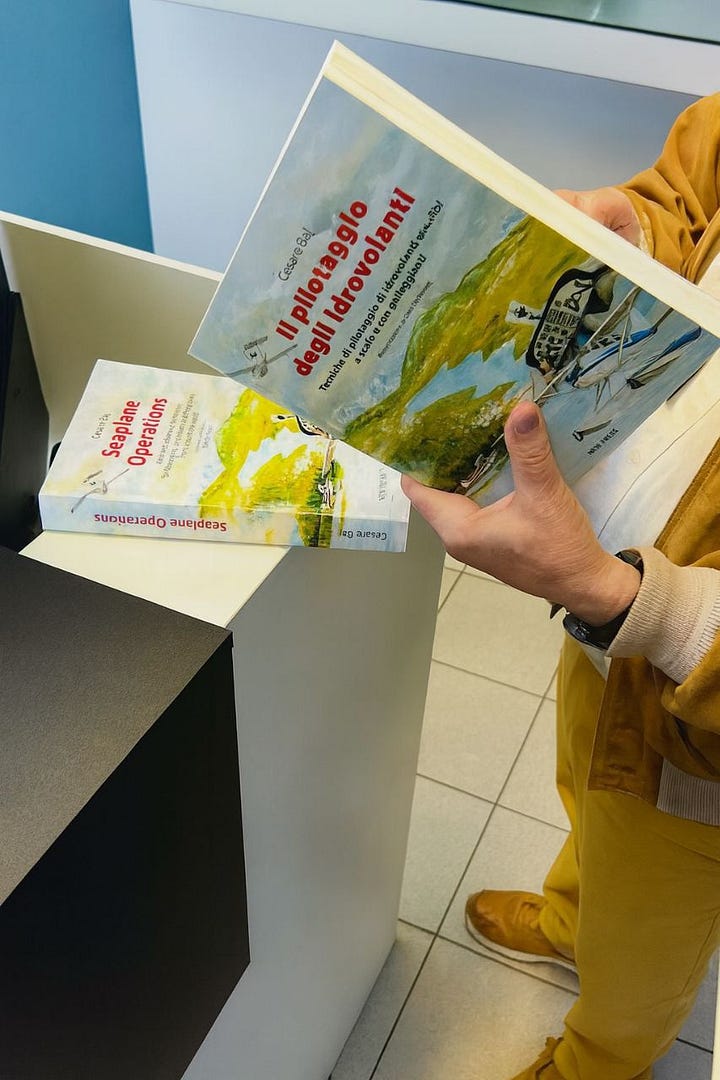
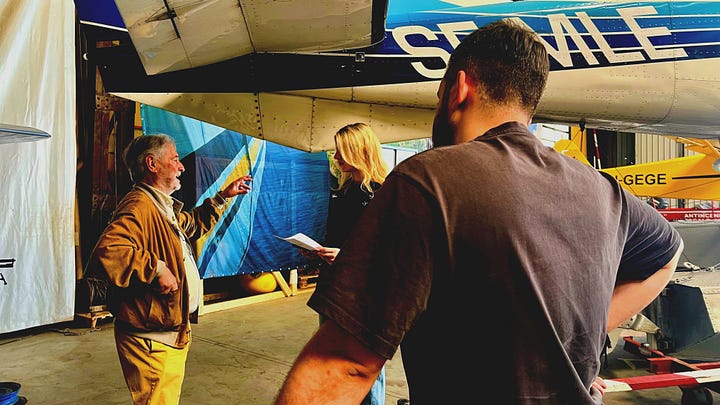
Landing on Water: Challenges and Techniques.
Seaplane piloting presents unique challenges, especially when it comes to landing.
Viktoriia H: “Is it better for you to land on the sea or on land?”
“Due to the waves and wind, every landing on the sea is different; it’s always a little bit tricky,” Baj shared.
Particularly challenging are “glassy water” conditions, where the water’s surface is so smooth that judging altitude becomes impossible.
“We use the glassy water landing technique — a real “art” for any bush pilot. Basically, you have to use an instrumental technique, it doesn’t matter if it’s at night or not.”
Ruslan Y: “Is landing at night restricted only in Italy, or is it a general aviation rule? By the way, can you land at night?”
“There are two lines of buoys which are lighted so that at night we could land without problems ... But that is not officially allowed.”
Ruslan Y: “Are there any new types of illusions when landing at night?”
“No, we use the same glassy water landing technique. You’re basically flying blind — no visual cues, just trust your instruments.The only precaution is to be sure there are no obstacles on the surface.”
Flying History: Italy’s Oldest Seaplane, the Caproni CA 100.
The Aero Club Como is not just about flying; it’s about preserving aviation history. One of its most prized possessions shared with a member of the Club who generously sustained the restoration, is the Caproni CA 100, affectionately known as “Caproncino” (“small Caproni”), a two-seat tandem biplane with an open cockpit.
It was restored exactly as it was when it left the factory in 1935. The restoration process, which involved the engine alone, took two years. This vintage biplane is flown by two qualified pilots, Baj being one of them.
“It has been through many, many reconstructions, revisions... We sent the engine England, where it underwent a full overhaul — essentially returned to factory condition, or ‘zeroed out’ as pilots say.”
A few times per year, the club organises Caproncino Day — a special occasion when this historic aircraft takes to the skies once again, drawing enthusiasts and celebrating the legacy of seaplane aviation in Italy.
This attention to detail and reverence for aviation history make the Caproncino not only a showpiece but a living, flying symbol of Italy’s aviation legacy.
The Club also owns a flying boat, the 1946 Republic Seabee, two Cessnas “Birddog”, which were employed in the Corean and Vietnam war, and a Macchi MB 308, a wooden floatplane of the late 1940s.
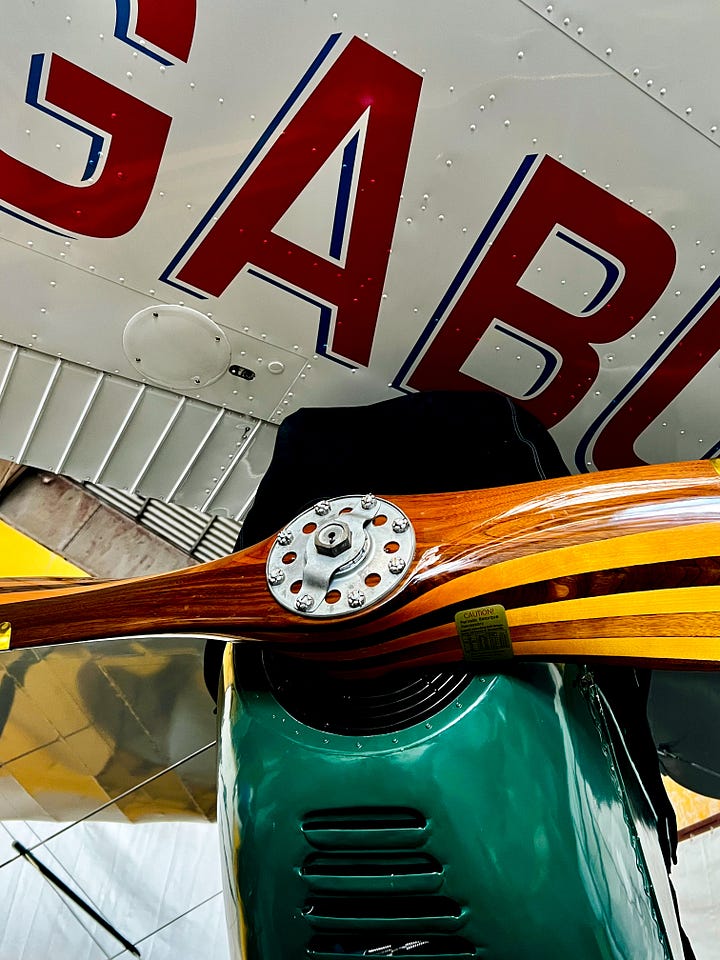
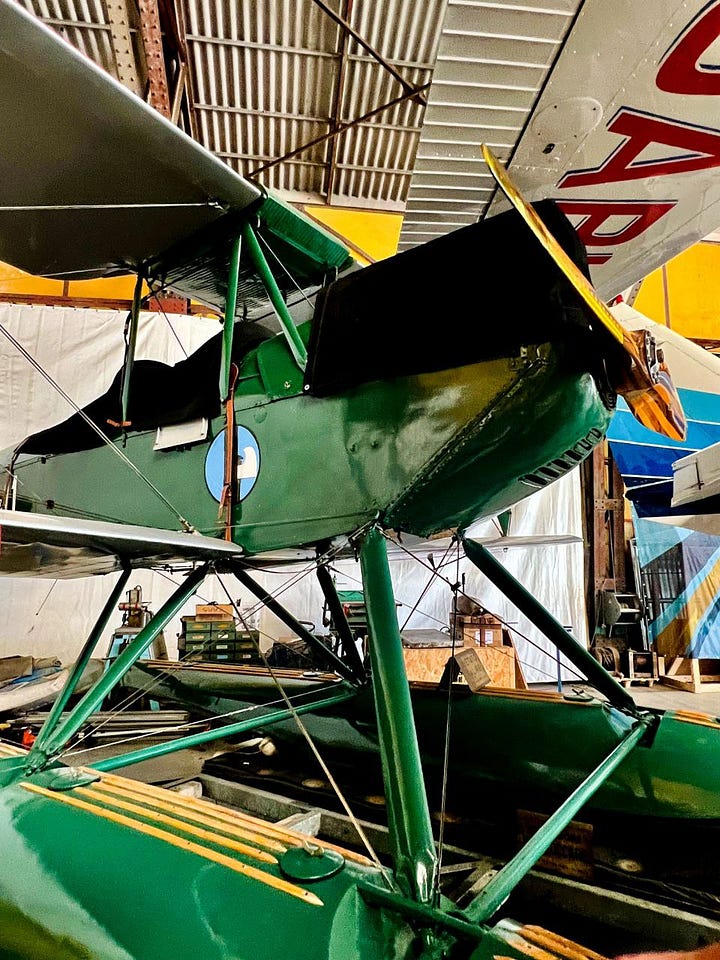
A Hub for Global Seaplane Training
Beyond its historical significance, the Aero Club Como serves as a premier training ground for seaplane pilots worldwide.
Viktoriia H: “How many students are currently studying here?”
“This year we have 40 from Vietnam, 90 from Turkey, for instance. They come from all over the world to fly here.”
Pilots are attracted by the club’s comprehensive fleet and specialized instruction. “We have all kinds of seaplanes: straight floats, amphibious floats,flying boat. That’s why pilots come from all over the world,” Baj explained.“Our training program is recognized by authorities in Europe, Turkey, and Vietnam.“
The club operates as a non-profit organization, but owns a with commercial wing offering tourist flights.This commercial side-activity supports the club’s primary mission: training and promoting seaplane aviation.”The company is the property of the Como Aero Club. So we operate commercially, but the benefit goes to a non-profit association.”
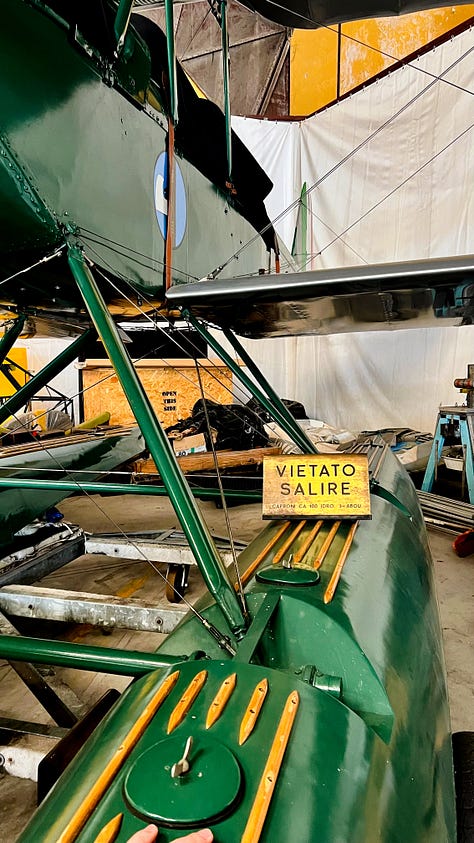
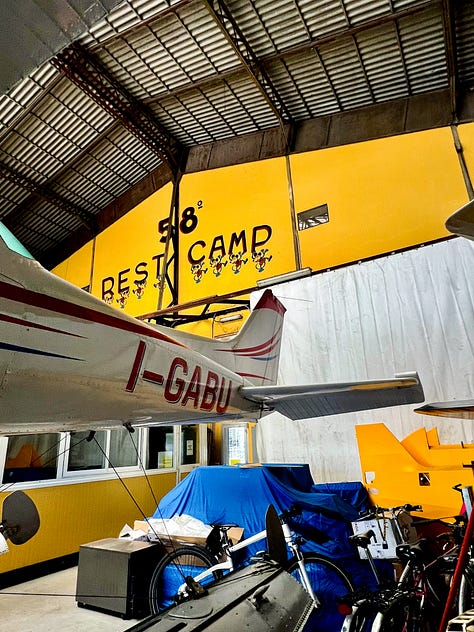
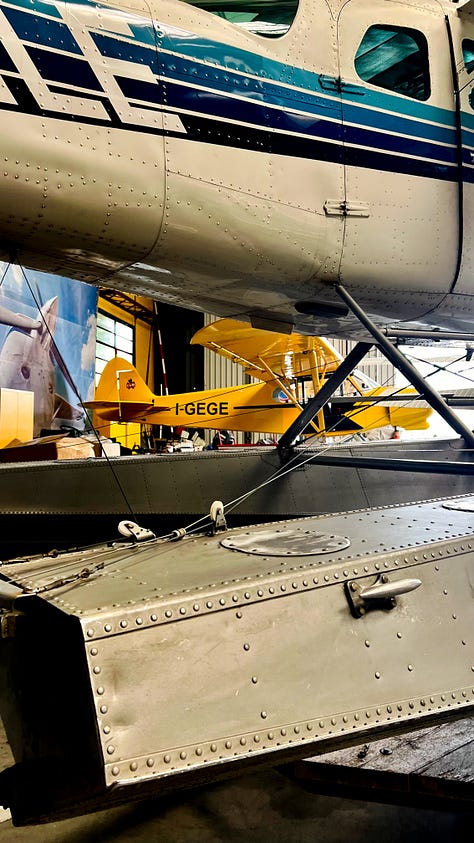
Ruslan Y: “When I get the seaplane rating, 8 hours plus an exam, can I rent an airplane here?”
“If you are rated, you can become a member of the club, pay the annual fee, and you can fly our seaplanes.”
Viktoriia H: “Can you describe the mood of the club? Is it like a flying family?”
“Yes, we’re a tight-knit hangar family of seaplane pilots. Not only here, but as I said, all over the world.”
This sense of community is deeply rooted in tradition. “When we go to Canada, the United States, and Australia, if we say that we are from the Como club, we can feel at home because everyone knows us, and we know all the other operations, so we are very, very connected. We are all friends,” Baj added.
Upholding Traditions Amid Regulatory Challenges
Operating a seaplane club in Europe comes with its own set of challenges, particularly concerning regulations.
Viktoriia H: “Do you think European regulations need to change to better support seaplane aviation?”
“In France, you have to get permission from 12 authorities to spend half a day on the surface. In Italy, there is a law that allows seaplanes to land on any water surface... But here and there, you come across local authorities who say, ‘No, you cannot land here’. Either way, you have to fight to maintain this privilege.” Baj noted.
Italy is one of the few countries, along with Scandinavia and Poland, where such freedoms exists. Baj emphasises that local water usage laws, rather than aviation rules, are the main obstacle.“Many authorities are afraid about what they do not know and don’t bother to learn from those who know more or who have been doing the activity for a century”. Baj says.
He recalled that, following World War II, water aviation was shut down in most countries across Europe. However, the Aero Club Como continued flying and kept Italy’s regulations alive. “All the countries lost their regulation of seaplanes except Italy, thanks to this organisation,” Baj said. In fact, it must be said that a few aviation authorities wanted to revive water aviation in the 1980s and 2000s, came to Como to learn and model their rules.
“The European Aviation Authority contacted us regarding seaplane licences,” he added. “They needed a reference — and since we were largely the most structured seaplane operation in Europe, they came here to study how we manage operations, licensing, and training. We’ve essentially kept the legacy and regulatory know-how alive when others let it fade away.”
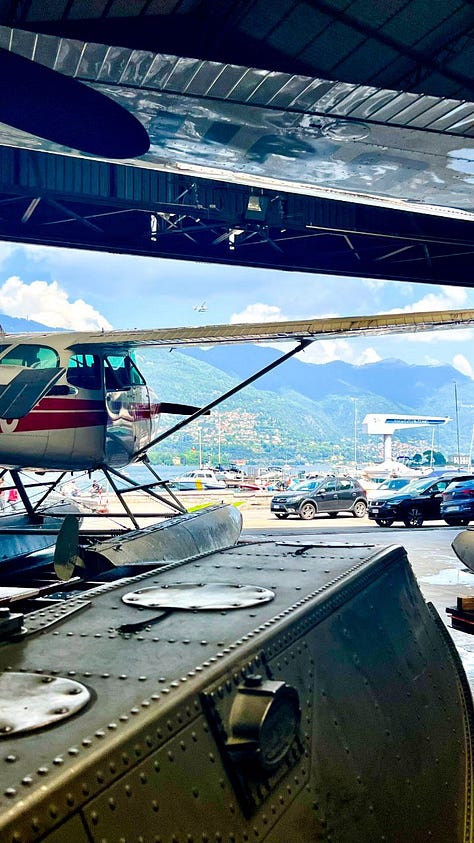
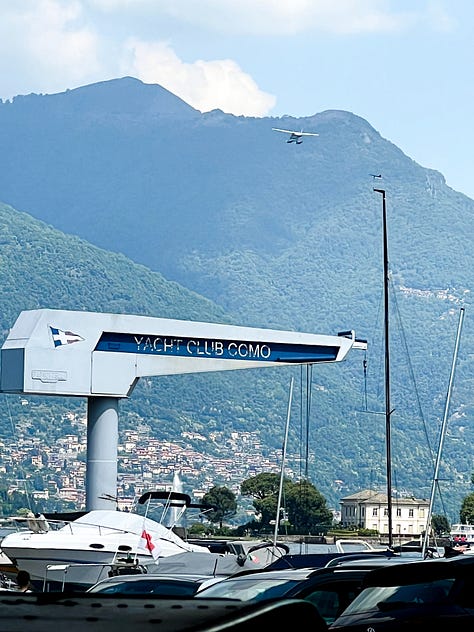
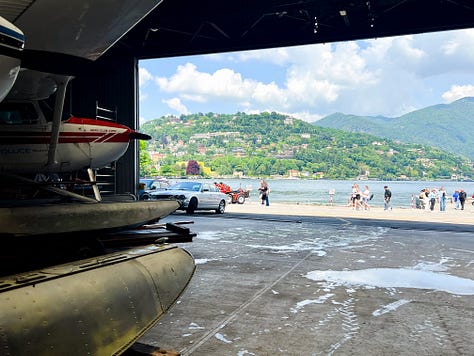
Viktoriia H: “Have there been attempts to stop the club’s activity?”
“In the past, there was a plan to turn this area into a big convention centre, but it never happened. The proposal faced significant local resistance due to the site’s deep historical and cultural significance. Over the decades, the Aero Club has earned the respect of both authorities and the community, who recognise its unique contribution to aviation and heritage and to the benefits for the local community. We have history, and that’s respected.”
Viktoriia H: “What’s your current concession period with the city?”
“We recently signed for 20 years.”
Viktoriia H: In Ukraine, concession periods of up to 50 years are sometimes offered. Does that happen here as well?”
“Fifty? No, no, in Italy, 20 years is a significant amount of time. But there are restrictions. All the buildings in this area are historical, built in the rationalistic style of the 1930s. So you cannot demolish or repurpose them. This one can only be used for seaplane maintenance and recovery.
Viktoriia H: “How is Aero Club Como officially registered in Italy — is it a non-profit, a private entity, or something else?”
“We are a non-profit association. The commercial activity — such as sightseeing flights — is run by a company owned by the club, and the revenue supports our educational mission.”
Ruslan Y: “So, aside from tourism flights, how else do you generate income to maintain the fleet and the facilities?”
“We rely on member fees, training programs, and occasional sponsorships or private support for restoration projects, like with the Caproncino. But our structure ensures that all profits go back into operations, not to individuals.”
This model reflects a broader philosophy: aviation should be accessible, sustainable, and community-driven. It’s a balance of passion and pragmatism — enabling Aero Club Como to preserve history while nurturing the next generation of pilots.
Exploring Future Collaboration: Aero Club Como and Ukraine
Cesare Baj, Honorary President of the Aero Club Como, expressed strong support for Ukraine and its aviation development. Although he has never been to Ukraine, he said he would gladly come to help :
“Fellow Ukrainians, if you need me to come to Ukraine to transmit my knowledge of water aviation and help starting seaplane operations…, I will come.”
In conversation with pilot Ruslan Yutush and journalist Viktoriia Hrechukha, Baj noted that Ukraine’s vast free airspace and availability of artificial lakes could provide a viable setting for seaplane operations:
Baj: “You can land in artificial lakes — we do that here in the Alps. Why not in Ukraine?”
Indeed, Ukraine has numerous reservoirs, lakes, and river systems — including the Dnipro and Dniester — that could serve as suitable environments for seaplane activity. With adequate infrastructure and regulatory support, some of these could become operational bases for amphibious aircraft.
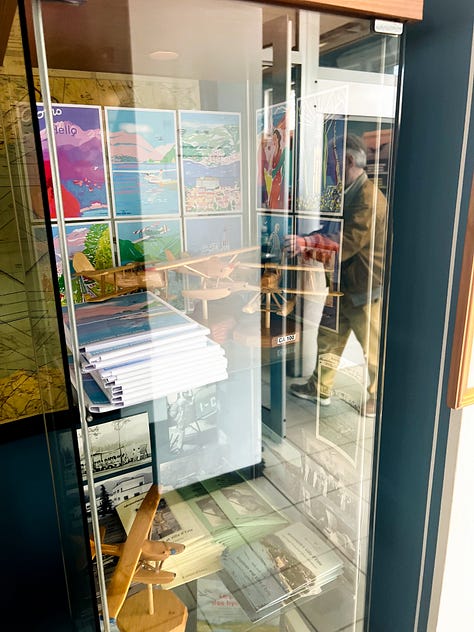
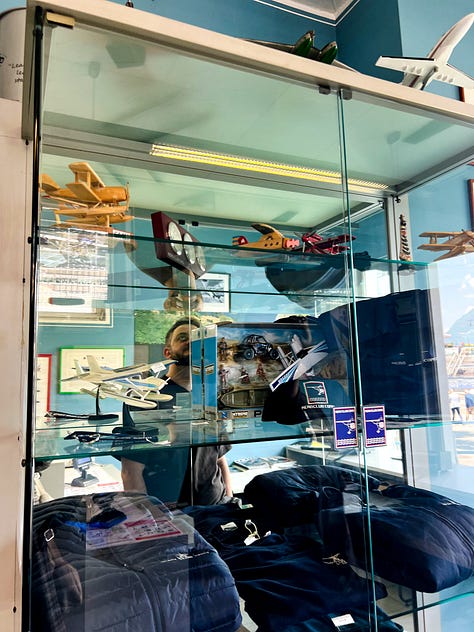
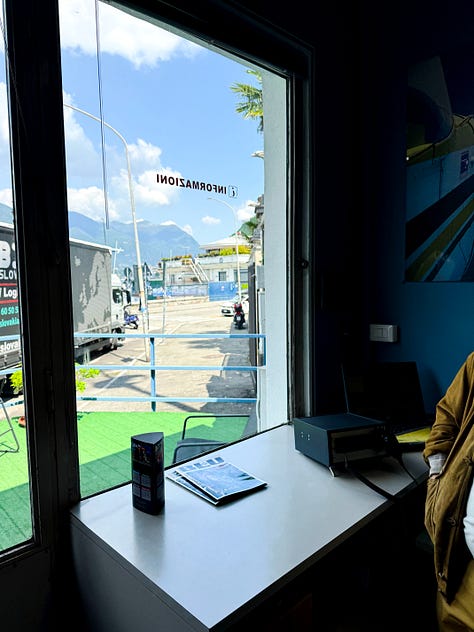
Yet the development of water aviation in Ukraine faces hurdles. The country lacks clear seaplane-specific regulations, and local authorities often prioritise land-based infrastructure or manage lakes for recreational or energy use. Without a legal framework like Italy’s, water flying remains a challenge. Still, the potential exists, especially with postwar reconstruction and international collaboration on the horizon.
“A seaplane activity can be set up in any environment and can fully coexist with any other activity, as it is demonstrated by our operations here on Lake Como, an extremely crowded area hosting a large town and a multitude of activities”. Baj says.
The Spirit That Keeps Flying
As our conversation came to a close, one question hovered above us — what fuels a lifetime of flying?
“Being able to fly an aircraft yourself is a wonderful feeling. It gives you a sense of power and independence. But more than anything, it’s about curiosity — the desire to discover and understand.”
Cesare Baj’s answer wasn’t just personal — it reflected the soul of the Aero Club Como itself. Here, flying is more than transportation. It is heritage, identity, and quiet determination passed from one generation to the next.
The Aero Club Como reminds us that even in a rapidly changing world, some dreams continue to take flight — again and again.
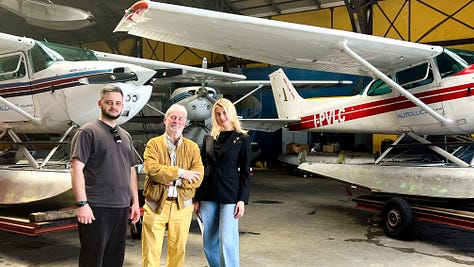
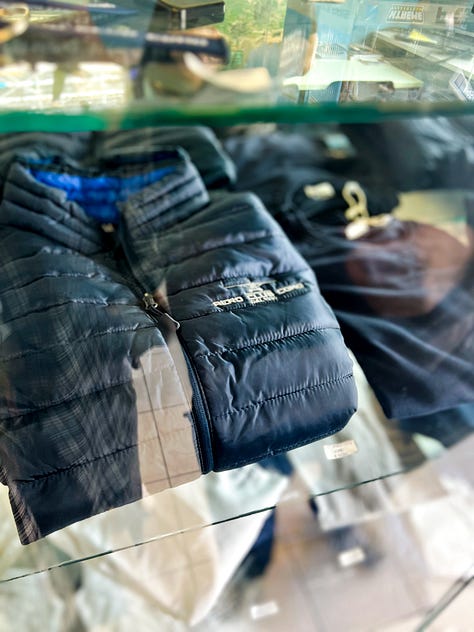
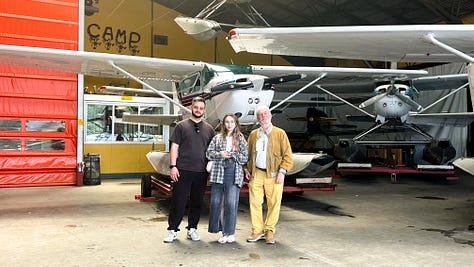
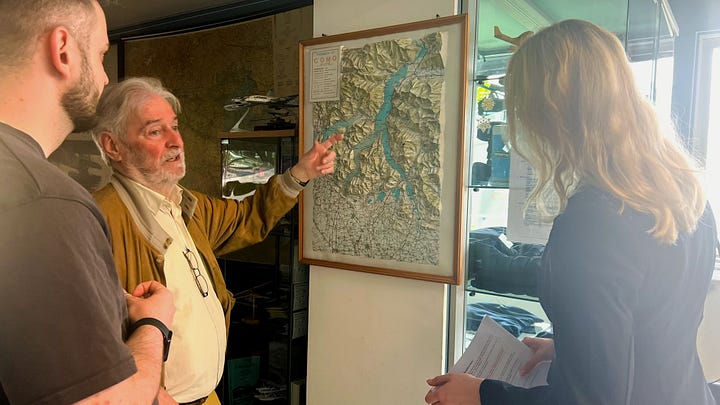
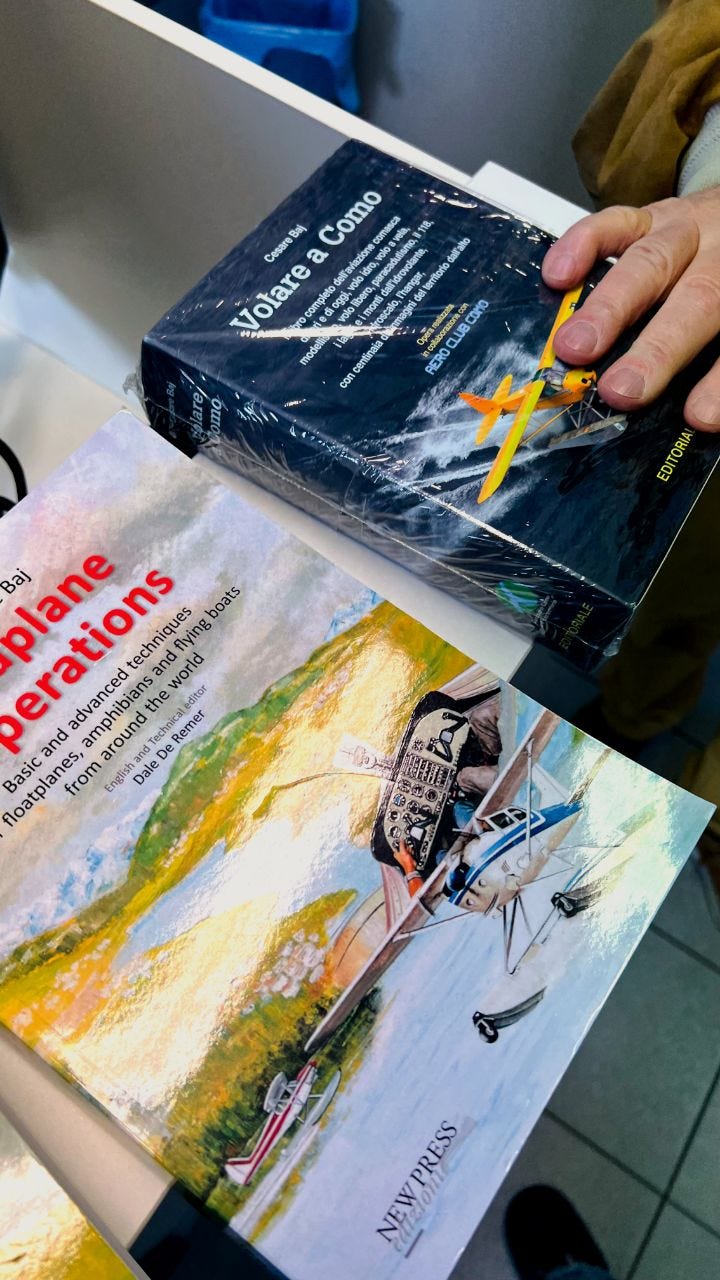
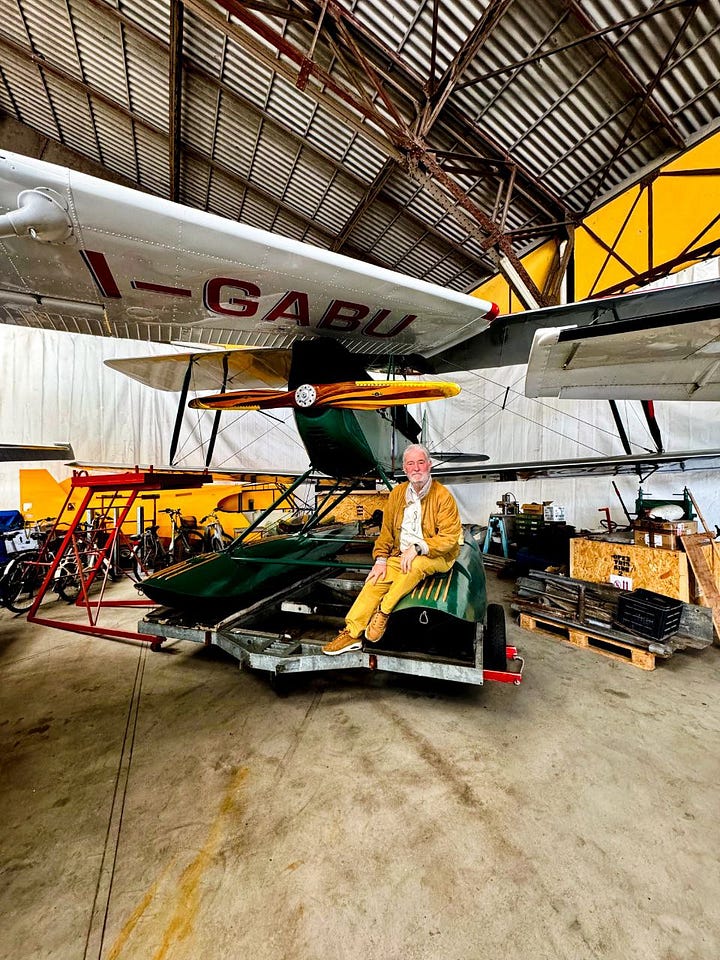
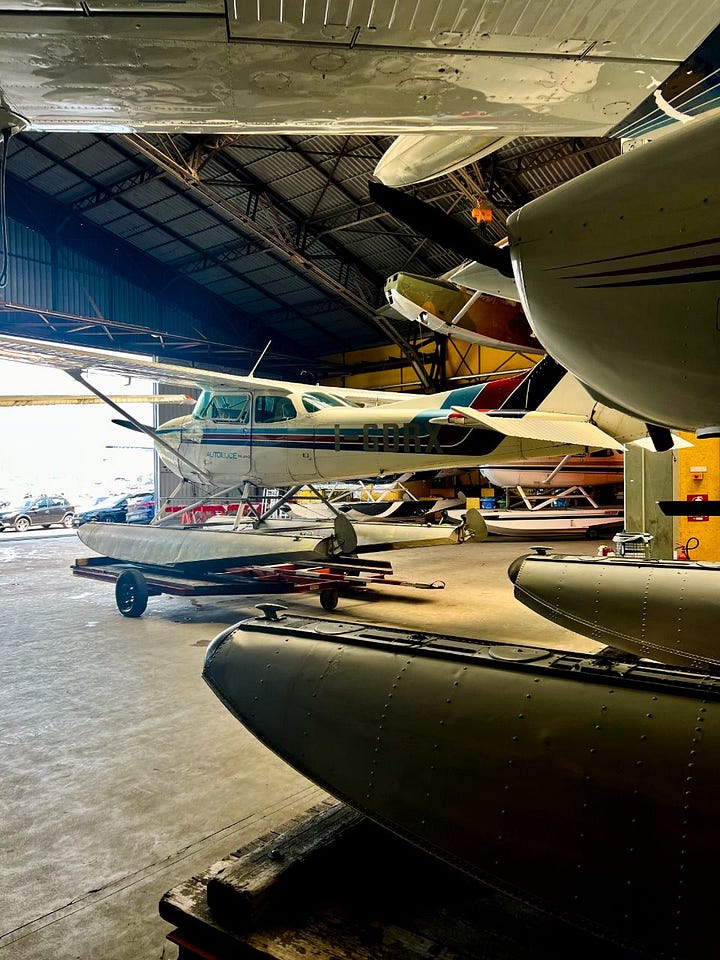
Special thanks to Cesare Baj for sharing his insights and history with us, to professional pilot Ruslan Y for his thoughtful participation, and to Kateryna Nyzhnyk-Yutysh for the support with visual documentation.
With appreciation,
Nazar Starosta & Viktoriia Hrechukha


